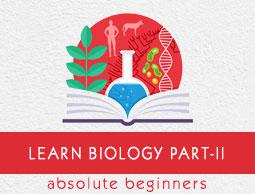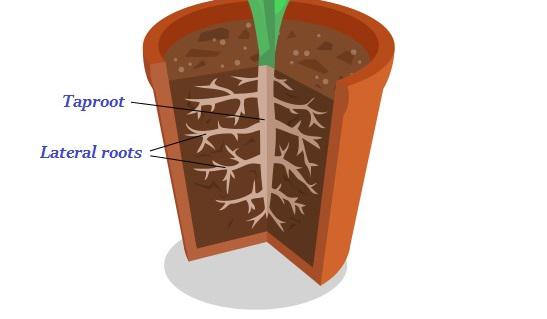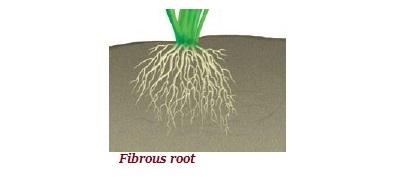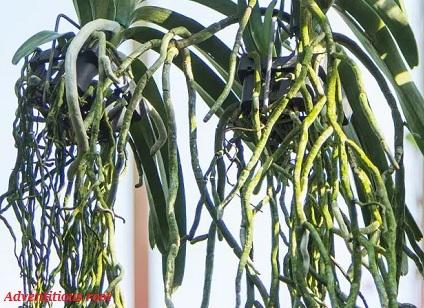Based on the fertilization of the flowers, fruit is classified as −
True Fruits − When the fruit forms in the ovary (of the flower) through fertilization is known as true fruit. E.g. strawberry.
False Fruits − The fruits formed some other means (other than ovary), such as calyx, thalamus, corolla, etc. known as false fruits. E.g. pear, apple, etc.
Further, because of verities and diversities, fruits are classified as −
Simple fruit − It can be either dry fruit (such as coconut, walnut, etc.) or fleshy (such as gooseberry, tomato, etc.).
Aggregate fruit − It is formed from single flowers, which have multiple carpels. E.g. raspberry.
Multiple fruit − It is formed from a cluster of flowers, e.g. pineapple, mulberry, etc.
| Disease |
Plants Affected |
| Cankers |
Largely woody plants |
| Downy mildew |
Grains, onions, cucumbers, alfalfa, etc. |
| Ergot |
Rye, barley, wheat and other grasses |
| Powdery mildew |
Grains, legumes |
| Tuber diseases |
Potato, sweet potato, etc. |
| Rusts |
Wheat, barley, rye, oats, etc. |
| Root rots |
All types of plants |
| Scab |
Wheat, barley, rye, potato, etc. |
| Smuts |
Oats, barley, corn, wheat, grasses, etc. |
| Wilts |
Potatoes, alfalfa, etc. |
| Cavity spot |
Carrot |
| Leaf blight |
Carrot |
| Ring spot |
Brassicas |
| Glucose Homeostasis Disorders |
| Diseases |
Types |
Result |
| Diabetes Mellitus |
Type 1 Diabetes |
Increases sugar levels |
| Type 2 Diabetes |
|
| Gestational Diabetes |
|
| Hypoglycemia |
Idiopathic hypoglycemia |
Decreases sugar level (below normal) |
| Insulinoma |
|
| Glucagonoma |
Cause: Because of the overproduction of glucagon hormone |
tumor of the pancreas |
| Thyroid Disorders |
| Goiter |
Cause: deficiency of iodine |
swelling of the neck or larynx |
| Hyperthyroidism (excessive production of thyroid hormone) |
Graves-Basedow disease |
Muscle weakness, sleeping problems, diarrhea, weight loss, etc. |
|
Toxic multinodular goitre |
|
| Hypothyroidism |
| (low release of thyroid hormone) |
|
Poor ability to tolerate cold, a feeling of tiredness, constipation, depression, and weight gain |
| Thyroiditis |
Hashimoto’s thyroiditis |
Inflammation of the thyroid gland |
| Thyroid cancer |
|
Nodule in the thyroid region of the neck |
| Metabolic Bone Disease |
| Parathyroid gland disorders |
Primary hyperparathyroidism |
Alterations in the blood calcium levels and bone metabolism |
| Secondary hyperparathyroidism |
|
| Tertiary hyperparathyroidism |
|
| Hypoparathyroidism |
|
| Osteoporosis |
|
Bone weakness |
| Paget's disease of bone |
|
Weakening of bones |
| Rickets and Osteomalacia |
|
Child disease (because of vitamin D deficiency) |
| Pituitary Gland Disorders |
| Diabetes insipidus |
|
Excessive thirst and excretion of large amounts of severely dilute urine |
| Hypopituitarism |
|
|
| Pituitary tumors |
Pituitary adenomas |
|
| Prolactinoma |
|
| Acromegaly |
|
| Cushing's disease |
|
| Sex Hormone Disorders |
| Intersex disorders |
Hermaphroditism |
|
| Gonadal dysgenesis |
|
| Androgen insensitivity syndromes |
|
| Genetic and chromosomal disorders |
Kallmann syndrome |
|
| Klinefelter syndrome |
|
|
Turner syndrome |
|
| Acquired disorders |
Ovarian failure |
|
| Testicular failure |
|
| Disorders of Puberty |
Delayed puberty |
|
|
Precocious puberty |
|
| Menstrual function or fertility disorders |
Amenorrhea |
|
| Polycystic ovary syndrome |
|
The term vitamin was derived from a compound word namely "vitamin."
The Polish biochemist Kazimierz Funk, first used the compound word ‘vitamin’ in 1912.
Usually, vitamins are represented by the English capital letters, e.g. A, B, C, E, etc.
The body of a human being stores different vitamins widely; the vitamins A, D, and B12 are stored in substantial amounts, generally in the liver.
Deficiency of vitamins causes disease.
Based on solubility, vitamins are classified as water soluble vitamins and fat soluble vitamins.
Water-soluble vitamins can dissolve easily in water.
On the other hand, fat-soluble vitamins can be dissolved easily in fat.
Further, fat-soluble vitamins get absorbed easily through the intestinal tract.
| Minerals |
Deficiency disease |
Sources |
| Potassium |
Hypokalemia |
Sweet potato, potato, tomato, lentils, banana, carrot, orange, etc. |
| Chlorine |
Hypochloremia |
Table salt |
| Sodium |
Hyponatremia |
Table salt, sea vegetable, milk, etc. |
| Calcium |
Hypocalcaemia |
Eggs, canned fish, dairy products, nuts, etc. |
| Phosphorus |
Hypophosphatemia |
Red meat, fish, bread, dairy products, rice, oats, etc. |
| Magnesium |
Hypomagnesemia |
Legumes, nuts, seeds, spinach, peanut butter, etc. |
| Iron |
Anaemia |
Meat, seafood, beans, nuts, etc. |
| Zinc |
Hair loss, diarrhea |
Red meat, nuts, dairy products, etc. |
| Manganese |
Osteoporosis |
Grains, nuts, leafy vegetables, legumes, seeds, tea, coffee |
| Copper |
Copper deficiency |
Seafood, oysters, nuts, seeds |
| Iodine |
Goitre |
Grains, eggs, iodized salt |
| Chromium |
Chromium deficiency |
Broccoli, grape juice, meat, etc. |
| Molybdenum |
Molybdenum deficiency |
Legumes, whole grains, nuts |
| Selenium |
Selenium deficiency |
Brazil nuts, meat, seafoods, grains, dairy products, etc. |
| Sr.No. |
Terminology & Definition/Description |
| 1 |
Allele
An alternative form of a gene |
| 2 |
Amorph
A silent gene |
| 3 |
Angelman syndrome
a rare genetically inherited form of mental retardation |
| 4 |
Autosome
Synonymous with somatic chromosomes |
| 5 |
Chimera
An exceptionally rare person composed of the cells derived from different zygotes |
| 6 |
Chromosome
Rod-shaped or thread-like structures located within the cell nucleus that carry genes encoded by DNA |
| 7 |
Cloned gene
A recombinant DNA molecule along with the gene of interest |
| 8 |
Consanguinity
Having a common ancestor, i.e., blood relations |
| 9 |
Crossing over
The exchange of genetic material between a pair of homologous chromosomes |
| 10 |
Cross-pollination
Mating of two genetically different plants (but of the same species). |
| 11 |
Dizygotic twins
Twins produced from two separate ova, which are separately fertilized |
| 12 |
Deoxyribonucleic acid (DNA)
Composed of nucleic acids, DNA encodes the genes that facilitate genetic information to be passed to offspring. |
| 13 |
Evolution
Genetic change in a population of organisms over period of time |
| 14 |
Gamete
A reproductive sex cell (i.e. ovum or sperm) |
| 15 |
Gene
Units of inheritance typically occurring at specific locations (a chromosome) |
| 16 |
Gene Pool
All of the genes in all of the individuals in a breeding population |
| 17 |
Gene Flow
The transference of genes from one population to another |
| 18 |
Genetic Drift
Evolution, or change in gene pool frequencies, resulting from a random chance |
| 19 |
Genetics
Study of gene structure, action, and the patterns of inheritance of traits from parent to offspring |
| 20 |
Genome
The full genetic complement of a species |
| 21 |
Genomic imprinting
The epigenetic phenomenon by which certain genes are expressed in a parent-of-origin-specific manner |
| 22 |
Genotype
Genetic constitution of a cell (of an individual organism) |
| 23 |
Gout
Genetically inherited metabolic disorder (or a type of arthritis) |
| 24 |
Hemophilia
Genetic disorder (largely inherited), problem in blood clotting |
| 25 |
Heterozygous
A cell containing two different alleles of a gene |
| 26 |
Huntington's disease
An inherited disorder that results into death of brain cells |
| 27 |
Hybrid
Combining the qualities of two animals or plants of different breeds, varieties, species (also known as crossbreed) |
| 28 |
Mutation
Change that occurs in DNA sequence |
| 29 |
Observable characteristics or traits of an individual resulting from the interaction between genotype and the environment |
| 30 |
Pleiotropy
When one gene influences two or more apparently unrelated phenotypic traits |
| 31 |
Psoriasis
An inherited disease categorized by recurring thick, reddish patches on skin |
| 32 |
Syntenic
Genes occurring on the same chromosome |
| 33 |
Zygote
The fertilized egg is known as zygote |
| Branch |
Studies |
| Anatomy |
Study of the internal structure of an organism |
| Aerobiology |
Study of airborne microorganisms |
| Agronomy |
Study of soil management and crop production |
| Agrostology |
Study of grasses |
| Araneology |
Study of spiders |
| Actinobiology |
Study of the effects of radiation upon living organisms |
| Angiology |
Study of the diseases of the circulatory system and of the lymphatic system |
| Bioinformatics |
of collecting and analyzing complex biological data including genetic codes through computer technology |
| Biotechnology |
Use of cellular and biomolecular processes to develop technologies and products, which ultimately help to improve human lives and the health of the planet. |
| Biochemistry |
Study of chemical and physio-chemical processes and substances, which occur within the living organisms. |
| Batrachology |
Study of amphibians including frogs and toads |
| Bioclimatology |
Study of the interactions between the biosphere and the Earth's atmosphere on time scales |
| Botany |
Study of plants |
| Bryology |
Study of mosses and liverworts |
| Cytology |
Study of the structure and function of plant and animal cells. |
| Cryobiology |
Study of biological material or systems at temperatures below normal |
| Chromatology |
Study of colors |
| Cetology |
Study of whales, dolphins, and porpoises |
| Chronobiology |
Study of periodic (cyclic) phenomena in living organisms |
| Conchology |
Study of mollusc shells |
| Chondrology |
Study of the cartilage |
| Craniology |
Study of the shape and size of the skulls of different human races |
| Cardiology |
Study of the diseases and abnormalities of the heart |
| Dendrology |
Study of trees |
| Dermatology |
Study of skin |
| Desmology |
Study of structures and anatomy of ligaments |
| Embryology |
Study of the prenatal development of gametes (sex cells), fertilization, and development of embryos and fetuses. |
| Ecology |
Study of interactions among organisms and their environment |
| Ethology |
Study of animal behaviors |
| Entomology |
Study of insects |
| Etiology |
study of causation, or origination (largely of diseases) |
| Epigenetics |
Study of the changes in a chromosome that affect gene activity and expression (specifically phenotype change and NOT genotype changes) |
| Ethnobotany |
Study of a geographic region's plants and their possible uses through the traditional knowledge |
| Forestry |
Study creating, managing, using, conserving, and repairing forests |
| Gynaecology |
Study of medical practice that deals with the health of the female reproductive systems |
| Gerontology |
Study of the process of ageing and old age problems |
| Genetics |
Study of genes, genetic variation, and heredity |
| Genecology |
Study of genetic variation of species and communities in comparison to their population |
| Genetic engineering |
Study of developing technique of direct manipulation of an organism's genome by using biotechnology |
| Horticulture |
Study of practice of garden cultivation |
| Helminthology |
Study of parasitic worms |
| Herpetology |
Study of reptiles (including amphibians) |
| Hepatology |
Study of liver |
| Haematology |
Study of blood, its problems and treatments |
| Histology |
Study of tissue |
| Ichthyology |
Study of fishes |
| Ichnology |
Study of traces of organismal behavior |
| Kalology |
Study of beauty |
| Lepidopterology |
Study of moths and the butterflies |
| Limnology |
Study of inland waters (emphasizing of biological, physical, and chemical features) |
| Limnobiology |
Study of animals and plants of fresh water |
| Molecular biology |
Study of the structure and function of the macromolecules (such as proteins and nucleic acids) |
| Malacology |
Study of the Mollusca |
| Mycology |
Study of fungi |
| Nephrology |
Study of kidney |
| Neurology |
Study of nervous system |
| Ornithology |
Study of birds |
| Ophthalmology |
Study of eye |
| Osteology |
Study of skeleton system |
| Palaeozoology |
Study of animal fossils |
| Physiology |
Study of normal functioning of living organisms |
| Pathology |
Study of disease and a major field in modern medicine and diagnosis |
| Palaeobotany |
Study of plant fossils |
| Phycology |
Study of algae |
| Pomology |
Study of fruits |
| Phrenology |
Study of specific functions of brain |
| Sedimentology |
Study of sand, silt, clay, etc. |
| Serpentology |
Study of snakes |
| Saurology |
Study of lizards |
| Sitology |
Study of food, diet, and nutrition |
| Spelaeology |
Study of caves |
| Taxonomy |
Study of nomenclature (classification) of animals |
| Trophology |
Study of nutrition (for healthy health) |
| Traumatology |
Study of wounds and injuries caused by accidents (or violence) |
| Zoogeography |
Study of distribution of animals |
| Zymology |
Study of the biochemical process of fermentation and its practical uses |
| Zootechny |
Study of domestication of animals (includes breeding, genetics, nutrition, and housing) |
| Zoonosology |
Study of animal diseases' |
| Zoology |
Study of animals |
| Name of inventions/discoveries |
Discoverers & Inventors |
| Systemic circulation of blood |
William Harvey |
| Observation of microorganisms |
Antony van Leeuwenhoek |
| Sex hormones |
Eugen Stainak |
| Simple microscope |
Anton van Leeuwenhoek |
| Stethoscope |
René Laennec |
| First test tube baby |
Robert Edward and Patrick Steptoe |
| Vaccination |
Edward Jenner |
| Vitamin |
Casimir Funk |
| CT scan |
Godfrey Hounsfield & Allan Cormack |
| DNA |
Rosalind Franklin and Maurice Wilkins |
| DNA Structure |
James Watson and Francis Crick |
| DNA Fingerprinting |
Alec Jeffreys |
| Electrocardiogram (ECG) |
Willem Einthoven |
| 5 kingdom classification |
R. H. Whittaker |
| Genetic code |
Marshall Nirenberg and Heinrich J. Matthaei |
| Genetic drift |
Sewall Wright |
| Father of heart transplantation |
Norman Shumway |
| Heart transplantation first performed |
Christiaan Barnard |
| Hormone |
William Bayliss |
| Insulin |
Frederick Banting and Charles H. Best |
| Malaria Parasite |
Charles Louis Alphonse Laveran |
| Magnetic Resonance Imaging (MRI) |
Damadian |
| Open heart surgery |
Dr. Daniel Hale Williams. And Dr. Daniel Williams |
| Penicillin |
Alexander Fleming |
| Polio vaccine |
Jonas Salk and a team |
| Rh factor in human blood |
Dr. Alexander S. Wiener and Karl Landsteiner |
| Cancer |
Hippocrates |
| Blood group (ABO group) |
Karl Landsteiner |
| Binomial nomenclature |
Carl Linnaeus |
| Bacteria (& protozoa) |
Van Leeuwenhoek |
| Aspirin |
Felix Hoffmann at Bayer in Germany |
| Jarvik-7 (first artificial heart) |
Willem Johan Kolff and Robert Jarvik |
| Anthrax vaccine |
Pasteur |
| Amoeba |
August Johann Rösel von Rosenhof |
| Oxygen in respiration and photosynthesis |
Joseph Priestley, Antoine Lavoisier and Jan Ingenhousz |
| Animal electricity |
Luigi Galvani |
| Cell |
Robert Hooke |
| Cell Theory |
Schleiden and Schwann |
| Chromosomes |
Hofmeister |
| Chioroplast |
Schimper |
| Mitochondria |
Kolliker |
| Nucleus |
Robert Brown |
| Nucleoplasm |
Strasburger |
| Enzyme |
Anselme Payen |
| Mitosis |
Walther Flemming |
| Meiosis |
Oscar Hertwig |
| Mutations |
Thomas Hunt Morgan and Lilian Vaughan Morgan |
| Virus |
Dmitri Ivanovsky & Martinus Beijerinck |
| Name |
Country/Year |
Work |
| Emil Adolf von Behring |
Germany (1901) |
Serum therapy |
| Sir Ronald Ross |
UK (1902) |
Worked on malaria |
| Ivan Petrovich Pavlov |
Russia (1904) |
Physiology of digestion |
| Albrecht Kossel |
Germany (1910) |
Cell Chemistry |
| Allvar Gullstrand |
Sweden (1911) |
Dioptrics of the eye |
| Alexis Carrel |
France (1912) |
Vascular suture and the transplantation of blood vessels and organs |
| Archibald Vivian Hill |
UK (1922) |
Production of heat in the muscle |
| Sir Frederick Grant Banting & John James Rickard Macleod |
Canada & UK (1923) |
Discovery of insulin |
| Karl Landsteiner |
Austria (1930) |
Discovery of human blood groups |
| Thomas Hunt Morgan |
US (1933) |
Role played by the chromosome in heredity |
| Carl Peter Henrik Dam |
Denmark (1943) |
Discovery of vitamin K |
| Sir Alexander Fleming |
UK (1945) |
Discovery of penicillin and its curative effect in various infectious diseases |
| Sir Ernst Boris Chain |
UK (1945) |
| Howard Walter Florey |
Austria (1945) |
| Carl Ferdinand Cori |
US (1947) |
Discovery of the course of the catalytic conversion of glycogen |
| Gerty Theresa Cori, née Radnitz |
|
|
| Max Theiler |
South Africa (1951) |
Yellow fever |
| Selman Abraham Waksman |
US (1952) |
Discovery of streptomycin, the first antibiotic effective against tuberculosis |
| Joshua Lederberg |
US (1958) |
Genetic recombination |
| Peyton Rous |
US (1966) |
Discovery of tumor-inducing viruses |
| Charles Brenton Huggins |
US (1966) |
Hormonal treatment of prostatic cancer |
| Har Gobind Khorana |
India & US (1968) |
Interpretation of the genetic code and its function in protein synthesis |
| Marshall W. Nirenberg |
US (1968) |
| Robert W. Holley |
US (1968) |
| Albert Claude |
Belgium (1974) |
Structural and functional organization of the cell |
| Christian de Duve |
| George E. Palade |
Romania (1974) |
| Baruch S. Blumberg |
US (1976) |
Origin and dissemination of infectious diseases |
| D. Carleton Gajdusek |
| Michael S. Brown |
US (1985) |
Regulation of cholesterol metabolism |
| Joseph L. Goldstein |
| Sir Richard J. Roberts |
UK (1993) |
Discovery of split genes |
| Phillip A. Sharp |
US (1993) |
| Paul Lauterbur |
US (2003) |
Magnetic resonance imaging |
| Sir Peter Mansfield |
UK (2003) |
| Andrew Z. Fire |
US (2006) |
Discovery of RNA interference |
| Craig C. Mello |
| Harald zur Hausen |
Germany (2008) |
Human papilloma viruses causing cervical cancer |
| Françoise Barré-Sinoussi |
France (2008) |
Discovery of human immunodeficiency virus |
| Luc Montagnier |
| Sir Robert G. Edwards |
UK (2010) |
Development of in vitro fertilization |
| Tu Youyou |
China (2015) |
Discovery of a novel therapy against Malaria |
| Yoshinori Ohsumi |
Japan (2016) |
Mechanisms for autophagy |












































